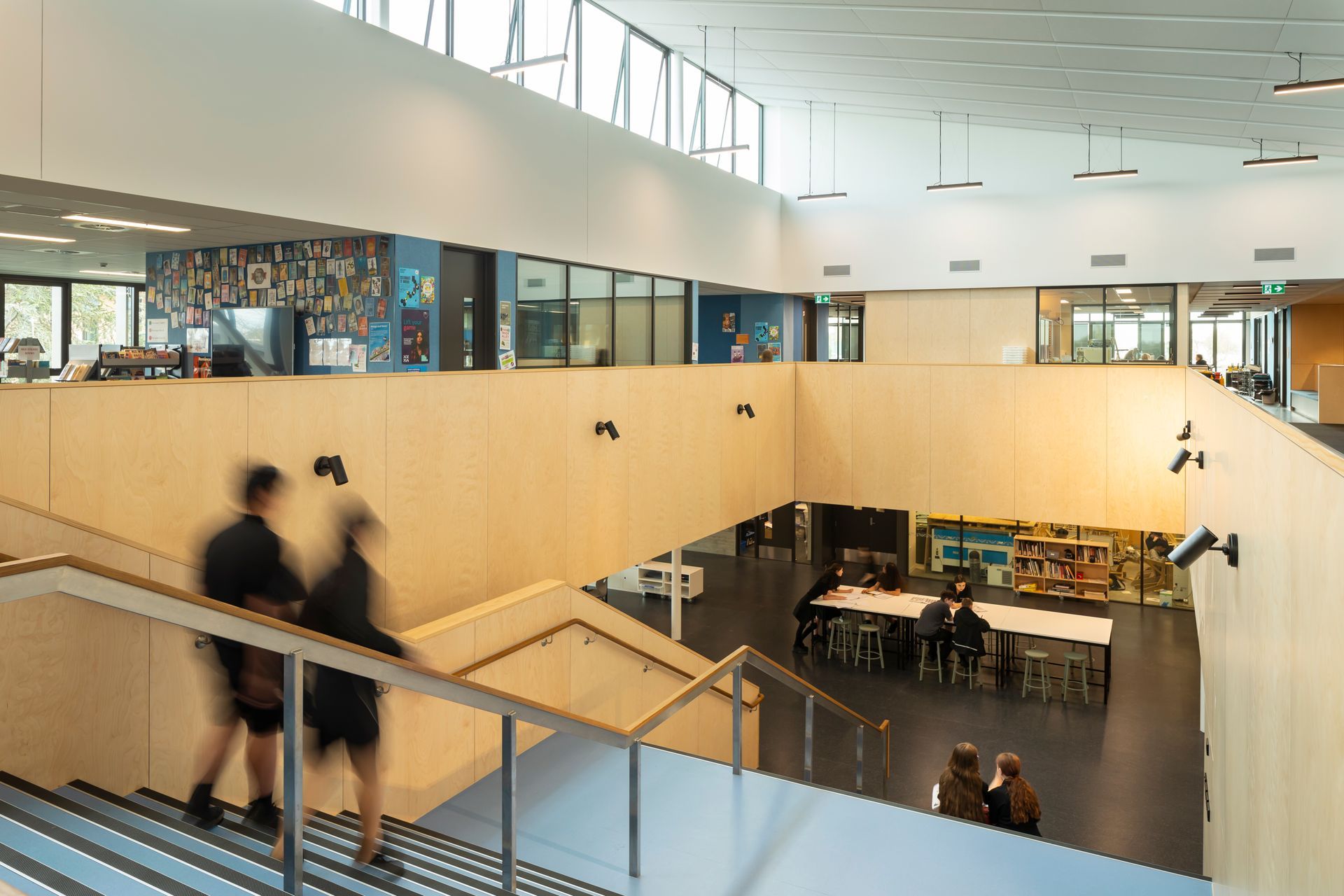The new Christchurch school designed for student success
Written by
14 November 2022
•
4 min read
Linwood College in Christchurch has been replaced with a rejuvenated campus, called Te Aratai College, that seeks to create a stronger sense of community, while still honouring the learners as individuals. After the 2011 earthquakes, even though the original school was not extensively damaged, there was an opportunity to rejuvenate the school with a campus that could attract new learners and connect with the community.
Architectus was brought on board to realise the new design, and principal Carsten Auer says the brief had student success as the central focus.
“The brief for the project was based on the pedagogical principles that the college wanted to introduce, but it had an extra element to the brief, which was to increase the appeal of the school to the broader community in the southeastern suburbs of Christchurch.”



The college is located within a developing area, and it was important for the new design to support every learner to feel part of the community, “but also to be recognised as an individual – in terms of their skills and their future pathways.”
The idea of a pathway is closely related to the cultural narrative that drove the project. Te Aratai means ‘pathway to the sea’, and was gifted by the local iwi Ngāi Tūāhuriri due to the significant rivers Ōtākaro and Ōpāwaho which lead to the estuary nearby, Te Ihutai.
At the centre of the school’s design is a whare.
“It reflects the college's relationship with mana whenua, and it anchors the college in its broader cultural context.”
Prioritising community connection within the school was key to the format of the buildings. For example, the creativity and innovation building, which contains the arts and ‘maker’ spaces, is located at the road frontage, so that when people come into the school they get a real sense of the learnings going on.
“The second aspect of community is around how the buildings are orientated to shape and enclose around a central courtyard. The large eaves of the building also give a sense of shelter and protection to the students,” says Carsten.




Three key materials were used to facilitate those connections with the courtyard: extensive glazing reinforces the linkage between the interior and exterior learning spaces; concrete provides a robust surface; and on the upper levels, the predominant material is a fibre cement cladding system from The Building Agency, installed by Symonite.
Project lead Daniela Vaníčková says the exterior material and colour palette were also chosen to enhance the sense of ease and connection within the school and the surrounding environment.
“The colours were selected to give the building scale and break it down into more manageable parts. The selection of colours relates to the Port Hills, which have these traditional South Island colours – light yellows, light greens, and autumnal tones.”
These colours continue in the interior through acoustic panels, bringing warmth to the classrooms, while also providing an easy way for new students and visitors to navigate the school.
“Every building is colour coded, which helps orientation within the college for the students and for the visitors. So the gymnasium is yellow, the multipurpose hall is teal, the creativity and innovation hub is blue, and the learning hub is green.”





The interior materiality also responds to the functionality of the spaces, ensuring products are both noise dampening and robust. In the classrooms there’s a combination of carpeted floors, soft furnishings and AUTEX wall coverings, which ensure good acoustics for learning. In the ‘maker’ spaces, resilient wet area flooring facilitates easy clean-up and in some of the communal areas polished concrete elevates the feel of the spaces.
Thus far, the materials have proven robust enough to handle the students, who appear to be thriving in their new campus.
Certainly, the proof is in the pudding when it comes to the success of the design, and since the school opened the roll has climbed rapidly from 650 to 850 students.
Carsten says it’s an incredibly satisfying outcome for the design team.
“It's always satisfying to see the spaces we design come to life, but the most satisfying thing has been seeing the roll growth and the college already needing to think about the next stages because of the popularity of the school in its community.”
Photography credit: Sarah Rowlands
Discover more images from this project.


